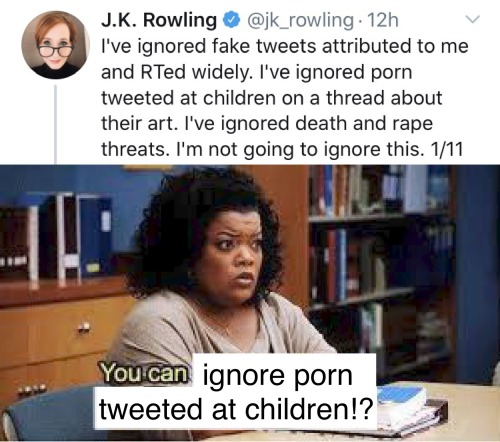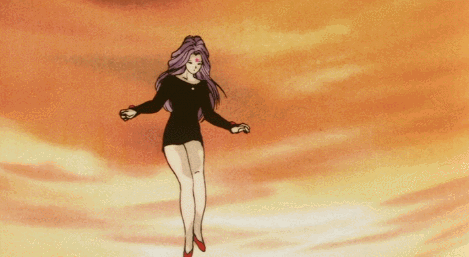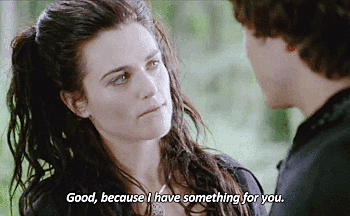Btw The Thing She Couldn’t Ignore Was Someone Calling Her Out For Saying Anti-depressants/hormone Therapy

btw the thing she couldn’t ignore was someone calling her out for saying anti-depressants/hormone therapy are only perscribed by lazy doctors
More Posts from Lunnym and Others











LOVE IS STORED IN THE KITCHEN PT 1/?
our beautiful life when it’s filled with shrieks by christopher citro, perhaps the world ends here by joy harjo, kerrylockwood on instagram, the egg-eaters by hilde goossens, @3000s on tumblr, art by tomoko hara @tomokohara, a pot of red lentils by peter pereira, bread and soup by diane fraser, @grebcomics, from a letter to donald windham by tennessee williams










one last stop by casey mcquiston // From Eden - Hozier // 39 ways that i love u - “The Beatrice Letters” (a series of unfortunate events) ~ lemony snicket // Hans Makart - Detail from Musikalische Unterhaltung , 1874 // Edgar Allan Poe //39 ways that i love u - “The Beatrice Letters” (a series of unfortunate events) ~ lemony snicket // Cornelia Street - taylor swift // nobody - Hozier // via instagram @artqueerhabibi // this love - taylor swift // Antony Gormley //
requested by @whinysstuff
In Chile we didn’t nonviolently defeat Pinochet: he decided to step down. Yes, we got to vote for whether we wanted him to stay on power or not, and the “no” won. However, had he wanted to stay in power he would have. He became dictator by fucking bombing the presidential house and killing anyone that disagreed with him, don’t think he couldn’t have done it again. But by “stepping down” he could live the rest of his life as a free man, with the income of an ex-president added to everything he stole, what he was paid by the USA, and whatever he got from allowing narcos to do whatever they wanted.
He wasn’t arrested after we returned to democracy. And when he was finally arrested, it wasn’t even done by us; the order was issued by Spanish judge Baltasar Garzón for the causes of genocide, terrorism and torture, when Pinochet was in London for medical reasons, almost 10 years after stepping down. How humiliating is that? That the murderer of our people had to be arrested in a different continent, because nobody was brave enough to do so in the land he abused?
So no, I don’t believe nonviolent struggle can defeat a dictator. For at least one of the examples quoted didn’t involve much “defeating”, but the dictator deciding to abide by democracy for once. And it took 17 years of dictatorship, 200 000 people in exile, the torture of 28 459 (denounced), 2125 deaths and 1102 missing people (in a country that had less than 9 million people). Do you want that “peaceful way” for your country?

"With Donald Trump set to take office after a fear-mongering campaign that reignited concerns about his desire to become a dictator, a reasonable question comes up: Can nonviolent struggle defeat a tyrant?
There are many great resources that answer this question, but the one that’s been on my mind lately is the Global Nonviolent Action Database, or GNAD, built by the Peace Studies department at Swarthmore College. Freely accessible to the public, this database — which launched under my direction in 2011 — contains over 1,400 cases of nonviolent struggle from over a hundred countries, with more cases continually being added by student researchers.
At quick glance, the database details at least 40 cases of dictators who were overthrown by the use of nonviolent struggle, dating back to 1920. These cases — which include some of the largest nations in the world, spanning Europe, Asia, Africa and Latin America — contradict the widespread assumption that a dictator can only be overcome by violence. What’s more, in each of these cases, the dictator had the desire to stay, and possessed violent means for defense. Ultimately, though, they just couldn’t overcome the power of mass nonviolent struggle.
In a number of countries, the dictator had been embedded for years at the time they were pushed out. Egypt’s Hosni Mubarak, for example, had ruled for over 29 years. In the 1990s, citizens usually whispered his name for fear of reprisal. Mubarak legalized a “state of emergency,” which meant censorship, expanded police powers and limits on the news media. Later, he “loosened” his rule, putting only 10 times as many police as the number of protesters at each demonstration.
The GNAD case study describes how Egyptians grew their democracy movement despite repression, and finally won in 2011. However, gaining a measure of freedom doesn’t guarantee keeping it. As Egypt has shown in the years since, continued vigilance is needed, as is pro-active campaigning to deepen the degree of freedom won.
Some countries repeated the feat of nonviolently deposing a ruler: In Chile, the people nonviolently threw out a dictator in 1931 and then deposed a new dictator in 1988. South Koreans also did it twice, once in 1960 and again in 1987. (They also just stopped their current president from seizing dictatorial powers, but that’s not yet in the database.)
In each case people had to act without knowing what the reprisals would be...
It’s striking that in many of the cases I looked at, the movement avoided merely symbolic marches and rallies and instead focused on tactics that impose a cost on the regime. As Donald Trump wrestles to bring the armed forces under his control, for example, I can imagine picketing army recruiting offices with signs, “Don’t join a dictator’s army.”
Another important takeaway: Occasional actions that simply protest a particular policy or egregious action aren’t enough. They may relieve an individual’s conscience for a moment, but, ultimately, episodic actions, even large ones, don’t assert enough power. Over and over, the Global Nonviolent Action Database shows that positive results come from a series of escalating, connected actions called a campaign...
-via Waging Nonviolence, January 8, 2025. Article continues below.
East Germany’s peaceful revolution
When East Germans began their revolt against the German Democratic Republic in 1988, they knew that their dictatorship of 43 years was backed by the Soviet Union, which might stage a deadly invasion. They nevertheless acted for freedom, which they gained and kept.
Researcher Hanna King tells us that East Germans began their successful campaign in January 1988 by taking a traditional annual memorial march and turning it into a full-scale demonstration for human rights and democracy. They followed up by taking advantage of a weekly prayer for peace at a church in Leipzig to organize rallies and protests. Lutheran pastors helped protect the organizers from retaliation and groups in other cities began to stage their own “Monday night demonstrations.”
The few hundred initial protesters quickly became 70,000, then 120,000, then 320,000, all participating in the weekly demonstrations. Organizers published a pamphlet outlining their vision for a unified German democracy and turned it into a petition. Prisoners of conscience began hunger strikes in solidarity.
By November 1988, a million people gathered in East Berlin, chanting, singing and waving banners calling for the dictatorship’s end. The government, hoping to ease the pressure, announced the opening of the border to West Germany. Citizens took sledgehammers to the hated Berlin Wall and broke it down. Political officials resigned to protest the continued rigidity of the ruling party and the party itself disintegrated. By March 1990 — a bit over two years after the campaign was launched — the first multi-party, democratic elections were held.
Students lead the way in Pakistan
In Pakistan, it was university students (rather than religious clerics) who launched the 1968-69 uprising that forced Ayub Khan out of office after his decade as a dictator. Case researcher Aileen Eisenberg tells us that the campaign later required multiple sectors of society to join together to achieve critical mass, especially workers.
It was the students, though, who took the initiative — and the initial risks. In 1968, they declared that the government’s declaration of a “decade of development” was a fraud, protesting nonviolently in major cities. They sang and marched to their own song called “The Decade of Sadness.”
Police opened fire on one of the demonstrations, killing several students. In reaction the movement expanded, in numbers and demands. Boycotts grew, with masses of people refusing to pay the bus and railway fares on the government-run transportation system. Industrial workers joined the movement and practiced encirclement of factories and mills. An escalation of government repression followed, including more killings.
As the campaign expanded from urban to rural parts of Pakistan, the movement’s songs and political theater thrived. Khan responded with more violence, which intensified the determination among a critical mass of Pakistanis that it was time for him to go.
After months of growing direct action met by repressive violence, the army decided its own reputation was being degraded by their orders from the president, and they demanded his resignation. He complied and an election was scheduled for 1970 — the first since Pakistan’s independence in 1947.
Why use nonviolent struggle?
The campaigns in East Germany and Pakistan are typical of all 40 cases in their lack of a pacifist ideology, although some individuals active in the movements had that foundation. What the cases do seem to have in common is that the organizers saw the strategic value of nonviolent action, since they were up against an opponent likely to use violent repression. Their commitment to nonviolence would then rally the masses to their side.
That encourages me. There’s hardly time in the U.S. during Trump’s regime to convert enough people to an ideological commitment to nonviolence, but there is time to persuade people of the strategic value of a nonviolent discipline.
It’s striking that in many of the cases I looked at, the movement avoided merely symbolic marches and rallies and instead focused on tactics that impose a cost on the regime. As Donald Trump wrestles to bring the armed forces under his control, for example, I can imagine picketing army recruiting offices with signs, “Don’t join a dictator’s army.”
Another important takeaway: Occasional actions that simply protest a particular policy or egregious action aren’t enough. They may relieve an individual’s conscience for a moment, but, ultimately, episodic actions, even large ones, don’t assert enough power. Over and over, the Global Nonviolent Action Database shows that positive results come from a series of escalating, connected actions called a campaign — the importance of which is also outlined in my book “How We Win.”
As research seminar students at Swarthmore continue to wade through history finding new cases, they are digging up details on struggles that go beyond democracy. The 1,400 already-published cases include campaigns for furthering environmental justice, racial and economic justice, and more. They are a resource for tactical ideas and strategy considerations, encouraging us to remember that even long-established dictators have been stopped by the power of nonviolent campaigns.
-via Waging Nonviolence, January 8, 2025.
musicians really are walking red flags, aren’t they?
Me, applying a protective Gay Barrier™ before heading out to meet up with the Straights:


rant that no one asked for!!!
“no plan” from “wasteland, baby!” by hozier is SO GOOD. that shit changed my life like-
nihilism has been a top trend among my generation(gen z), and honestly it’s no shock. we were born into a burning world(both literally and figuratively!!) where trying to pursue our dreams means giving up EVERYTHING. money, time, relationships, living life. of course, this isn’t to say previous generations didn’t have to make sacrifices, it’s that gen z basically has to choose between following their dreams and being able to survive.
and then there’s the end of the universe, which will likely be a heat death. where the universe will have reached its maximum state of entropy and all hot things(or things with more energy) move to colder places(or places with less energy). and then, everything will be dark again; a parallel to how our universe was born.
and hozier illiterates both of these ideas of nihilism and the death of the universe beautifully, saying “everything will end anyways, and we’re so lucky to be here right now, so who cares?” for me, it’s an oddly hopeful thing, knowing that i will not be remembered at the end of the universe, so why care? as hozier says “there will be darkness again.”
and of course, he has amazing political/religious commentary. a few lines(i.e., “there’s no kingdom to come;” “there’s no hands on the reigns”) make direct jabs at religion- mostly christianity as we se sin other hozier songs like “take me to church” but that’s for another day!!
in all, this is one of the most underrated hozier songs and that is a CRIME. so listen to it right now, listen to the lyrics and just vibe man.
At first I was like “If he deduced you were trans, wouldn’t he deduce you hadn’t figured it out yourself as well” but… he probably wouldn’t have. that thought didn’t pass through his brain at all.
Whether someone is trans or not is not something the average person can decipher, although someone observant can certainly infer if someone is on the closet because of context clues, how they behave around different people and certain topics they might “close off” around. I can’t really tell if someone is a closeted gay, aromantic, asexual or trans, but my gaydar tells me that person is queer. However, Sherlock Holmes would probably never question it, for how could someone not deduce such a basic fact about their own identity by themselves, and would leave you in a gender crisis. That’s why he needs Watson, who would be very carefully listening to the exchange and would probably have a bit of a more empathetic approach.
sherlock holmes deduces you are trans before you've figured it out yourself and refers to you with those pronouns and then when you look confused is like "ah...had you not arrived at that conclusion yet?" and wafts away in his dressing gown to smoke seventeen pipes, leaving you in a gender crisis










“He may yet change. I believe there is goodness in him.”
i’m gonna become a naruto villain so naruto will punch me and tell me i’m actually a good person inside
-
 unfortunatelyashark liked this · 2 weeks ago
unfortunatelyashark liked this · 2 weeks ago -
 toomantlegsd reblogged this · 2 weeks ago
toomantlegsd reblogged this · 2 weeks ago -
 toomantlegsd liked this · 2 weeks ago
toomantlegsd liked this · 2 weeks ago -
 somedamslytherindemigod2 liked this · 2 weeks ago
somedamslytherindemigod2 liked this · 2 weeks ago -
 somedamslytherindemigod2 reblogged this · 2 weeks ago
somedamslytherindemigod2 reblogged this · 2 weeks ago -
 arcticwolfpack-blog reblogged this · 2 weeks ago
arcticwolfpack-blog reblogged this · 2 weeks ago -
 arcticwolfpack-blog liked this · 2 weeks ago
arcticwolfpack-blog liked this · 2 weeks ago -
 sillybearextraordinaire reblogged this · 2 weeks ago
sillybearextraordinaire reblogged this · 2 weeks ago -
 jjepicgamer123321 reblogged this · 2 weeks ago
jjepicgamer123321 reblogged this · 2 weeks ago -
 jjepicgamer123321 liked this · 2 weeks ago
jjepicgamer123321 liked this · 2 weeks ago -
 that-1-frenchfry reblogged this · 2 weeks ago
that-1-frenchfry reblogged this · 2 weeks ago -
 that-1-frenchfry liked this · 2 weeks ago
that-1-frenchfry liked this · 2 weeks ago -
 srbindy liked this · 2 weeks ago
srbindy liked this · 2 weeks ago -
 thorne1435 reblogged this · 3 weeks ago
thorne1435 reblogged this · 3 weeks ago -
 thorne1435 liked this · 3 weeks ago
thorne1435 liked this · 3 weeks ago -
 ivebeencursedbygays reblogged this · 3 weeks ago
ivebeencursedbygays reblogged this · 3 weeks ago -
 totallyawesome123 reblogged this · 3 weeks ago
totallyawesome123 reblogged this · 3 weeks ago -
 theringmasterofchaos reblogged this · 3 weeks ago
theringmasterofchaos reblogged this · 3 weeks ago -
 horror0fm7computer liked this · 3 weeks ago
horror0fm7computer liked this · 3 weeks ago -
 shykino liked this · 3 weeks ago
shykino liked this · 3 weeks ago -
 annoying-leftist-donkey reblogged this · 3 weeks ago
annoying-leftist-donkey reblogged this · 3 weeks ago -
 crosslizzshipper2026 liked this · 3 weeks ago
crosslizzshipper2026 liked this · 3 weeks ago -
 i-eat-kids-akamoth-mwehe reblogged this · 3 weeks ago
i-eat-kids-akamoth-mwehe reblogged this · 3 weeks ago -
 midnightidk10 reblogged this · 3 weeks ago
midnightidk10 reblogged this · 3 weeks ago -
 midnightidk10 liked this · 3 weeks ago
midnightidk10 liked this · 3 weeks ago -
 goldengirlonthemoon reblogged this · 3 weeks ago
goldengirlonthemoon reblogged this · 3 weeks ago -
 fibromyalgicaf liked this · 3 weeks ago
fibromyalgicaf liked this · 3 weeks ago -
 sorryimamagpie reblogged this · 3 weeks ago
sorryimamagpie reblogged this · 3 weeks ago -
 araigumaaa reblogged this · 3 weeks ago
araigumaaa reblogged this · 3 weeks ago -
 s1r3n1cdr4g0n reblogged this · 3 weeks ago
s1r3n1cdr4g0n reblogged this · 3 weeks ago -
 harpnotes reblogged this · 3 weeks ago
harpnotes reblogged this · 3 weeks ago -
 ray-land17 reblogged this · 3 weeks ago
ray-land17 reblogged this · 3 weeks ago -
 paracosmspaces2002 reblogged this · 3 weeks ago
paracosmspaces2002 reblogged this · 3 weeks ago -
 swizzlemalarkey reblogged this · 3 weeks ago
swizzlemalarkey reblogged this · 3 weeks ago -
 swizzlemalarkey liked this · 3 weeks ago
swizzlemalarkey liked this · 3 weeks ago -
 dont-lick-my-foot reblogged this · 3 weeks ago
dont-lick-my-foot reblogged this · 3 weeks ago -
 dont-lick-my-foot liked this · 3 weeks ago
dont-lick-my-foot liked this · 3 weeks ago -
 dances-with-pans reblogged this · 3 weeks ago
dances-with-pans reblogged this · 3 weeks ago -
 lichenbu reblogged this · 3 weeks ago
lichenbu reblogged this · 3 weeks ago -
 lichenbu liked this · 3 weeks ago
lichenbu liked this · 3 weeks ago -
 kel-mp4 reblogged this · 3 weeks ago
kel-mp4 reblogged this · 3 weeks ago -
 han-nya-bb reblogged this · 3 weeks ago
han-nya-bb reblogged this · 3 weeks ago -
 maimoncat reblogged this · 3 weeks ago
maimoncat reblogged this · 3 weeks ago -
 thecelestialcarousel liked this · 3 weeks ago
thecelestialcarousel liked this · 3 weeks ago -
 gnomish-druid liked this · 3 weeks ago
gnomish-druid liked this · 3 weeks ago -
 aromantic-isopod reblogged this · 3 weeks ago
aromantic-isopod reblogged this · 3 weeks ago -
 tired-catgirl-gaming reblogged this · 3 weeks ago
tired-catgirl-gaming reblogged this · 3 weeks ago -
 the-nebula-sys reblogged this · 3 weeks ago
the-nebula-sys reblogged this · 3 weeks ago -
 pitchforksraised reblogged this · 3 weeks ago
pitchforksraised reblogged this · 3 weeks ago -
 endofanera-startofanage liked this · 3 weeks ago
endofanera-startofanage liked this · 3 weeks ago

a bit of an idiot. i’m always mad about something. 22. health student, full of existential dread. she/her.
235 posts